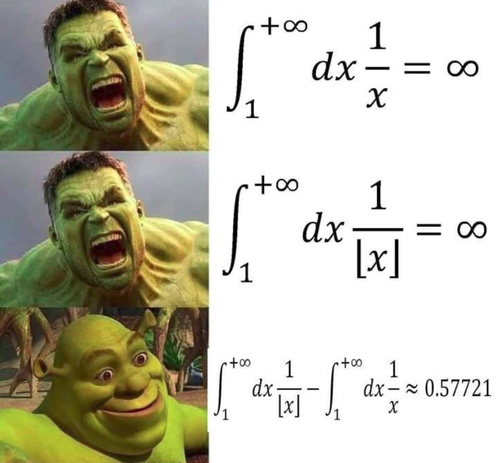Euler–Mascheroni constant! :euler:
In fact, the last one is:
\[\large\displaystyle\int_1^{+\infty}\mathrm dx\ \left(\frac{1}{\lfloor x\rfloor}-\frac1x\right)=\gamma\approx0.5772156649\]
Equivalently,
\[\large\displaystyle\lim_{n\to\infty}\left(\sum_{k=1}^n \frac1{k}-\ln n\right)=\gamma=0.5772156649\ldots\]
---------------------------------------------------------------------------------------------------------------------
Unsolved problem in mathematics:
Is Euler–Mascheroni constant irrational? If so, is it transcendental?
#Euler #Mascheroni #EulerMascheroni #Constant #gamma #EulerConstant #EulersConstant #EulerMascheroniConstant #Irrational #Irrationality #Transcendental #Transcendence #Unsolved #UnsolvedProblem #Maths #Mathematics #Indeterminate #IndeterminateForm #IndeterminateForms #Inf #Infinity #HarmonicNumber #HarmonicNumbers #HarmonicSeries #Logarithm #Log #Logarithms #NaturalLogarithm #Integral #ImproperIntegral
